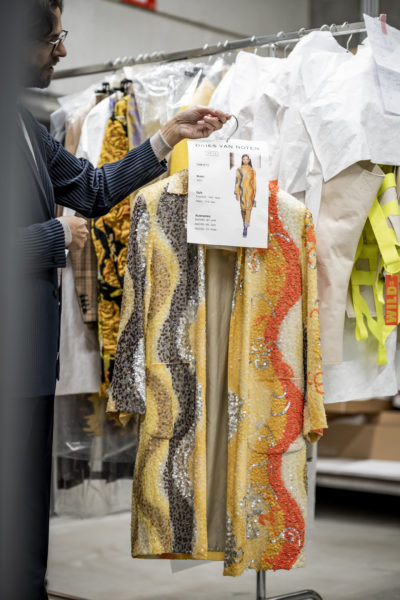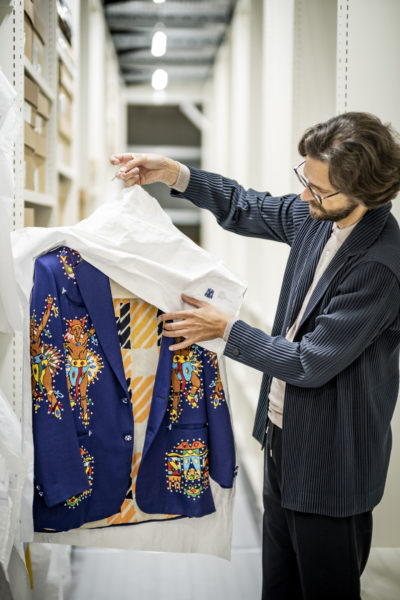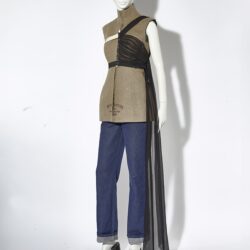The Philosophy Behind MoMu's Acquisition Policy

Not many people know what maintaining the policy of a museum collection actually entails. Wim Mertens, MoMu’s dedicated Curator of Collections, has the challenging task of dealing with donations and acquisitions, which are quite significant when it comes to enhancing the value and relevance of a collection that, in fact, keeps growing over the years.
A collection is never static and has to evolve constantly. The role of the curator is therefore to seize opportunities, while assessing the relevance of every object within the collection. We caught up with Mertens to discuss the key criteria behind his choices, dealing with the increasing number of individuals willing to donate, and why the process of collecting is not always a clear-cut one.


In terms of donations and acquisitions, what has been the focus of the museum for the past decade?
WIM MERTENS: "From 2011 onwards, the priority was given to designer fashion, as opposed to historical pieces. Now and then, when interesting historical pieces come along, we may decide to purchase them, but they need to be relevant to our contemporary collection, too. Our approach is a thematical one, so only a small amount of historical pieces will fit within that kind of perspective."
Private individuals have always donated to museums, but their behavior has changed over the years. Could you tell us how?
WM: "Donating used to be a prestigious thing individuals would do without expecting any money or financial gain in return. Today’s landscape is different. Many people come in with their pieces and expect money for what they own. They are very aware of the value of designer clothes, and know that online stores have increased the demand for vintage pieces as well."
Should we blame Martin Margiela for this? The prices of his clothes have kept increasing over the years.
WM: (laughter) "It’s not only Martin Margiela, but also Raf Simons and his early work. He even told us himself he was surprised how expensive they were. As a museum, we cannot deal with such price levels. Every year, we get more or less the same budget to play with and must make smart choices with the money we spend. A few years ago, there was this big Margiela sale in Paris and we were able to buy some of the pieces for our collection, so we do follow what’s happening on the market. That means checking all kinds of online platforms to see if there’s anything interesting, such as Byronesque for instance."
When do you know that a specific piece meets the criteria of the collection?
WM: "When we want to complete a silhouette, for instance. Linda Loppa, our former director and curator, often used to buy separate pieces, instead of complete looks, so we spend quite a bit of time looking for missing elements."
Sounds like a lot of fun…
WM: "Very often, we ask the designers themselves if we can complete the looks with the pieces we buy, as they might not be the ones seen on the runway. It’s important for us to consult them and get their agreement."
Why do you think people come to MoMu to donate their clothes?
WM: "I guess MoMu stands for avant-garde fashion and people realize that their pieces are going to be very well looked-after. That is reassuring for them, because they know they cannot always handle the garments themselves."
How much time do you spend dealing with donations?
WM: "I’d say one day a week is focused on that. And I also travel to meet people who own pieces they’d like us to have. I must say it’s always strange coming into a person’s home and go through their wardrobe with a curatorial eye. People often think that what they show us has real value, and even if you’re not interested in their pieces, they still expect you to give extra information on them. I’ve seen people get disappointed when we don’t take anything. Diplomacy and tact are key within my work."

How long can it take before someone lets go of their collection to give it to you?
WM: "That can take a very long time. For certain collections, it may take years before a person is ready to part with what they own. You need to listen to people’s stories and establish a relationship with them. Clothes often have emotional value, and this might be the reason why they kept certain things, but that doesn’t mean they will have value for us on a curatorial level."
A collection keeps changing over time. How often do you need to edit?
WM: "Well, I’ve always been told that lack of space is not an argument to get rid of certain pieces, and I agree with this up to a certain point. If some pieces have not been used -or consulted- for more than 20 years, maybe it’s time to look for another location for them. It’s not that we want to get rid of them or destroy them. We do want other museums to have them, in order to keep those pieces in the public domain."
Does this mean that every choice has to be approached rationally?
WM: "It does, but another part is also curatorial instinct. Every piece has intrinsic value and can be interesting on some level, but at a certain point choices have to be made in order to keep the collection relevant. I often struggle with this as an individual, but that is definitely part of my job. Over time, certain objects lose their appeal, and we need to make sure that our collection reflect the times accurately, as well as our point of view as curators."





